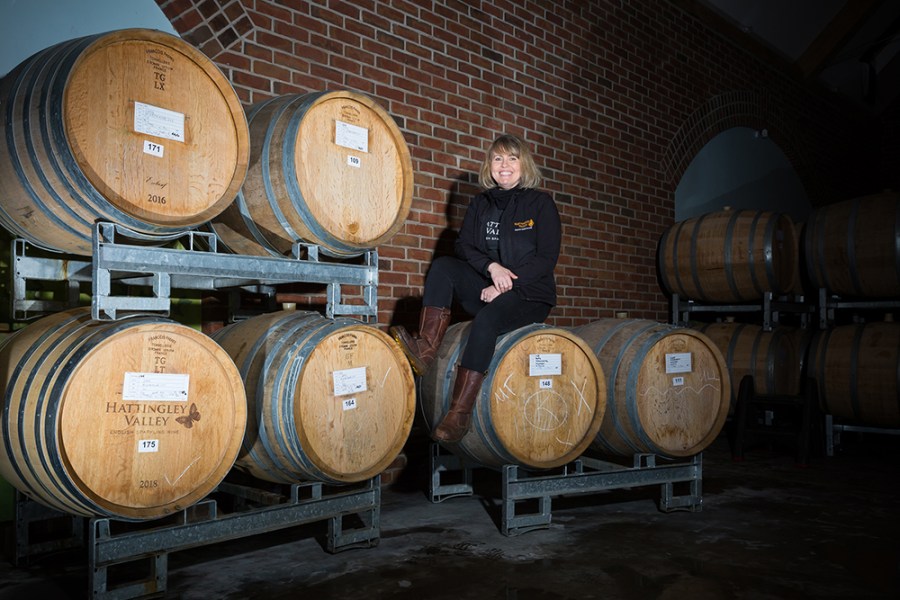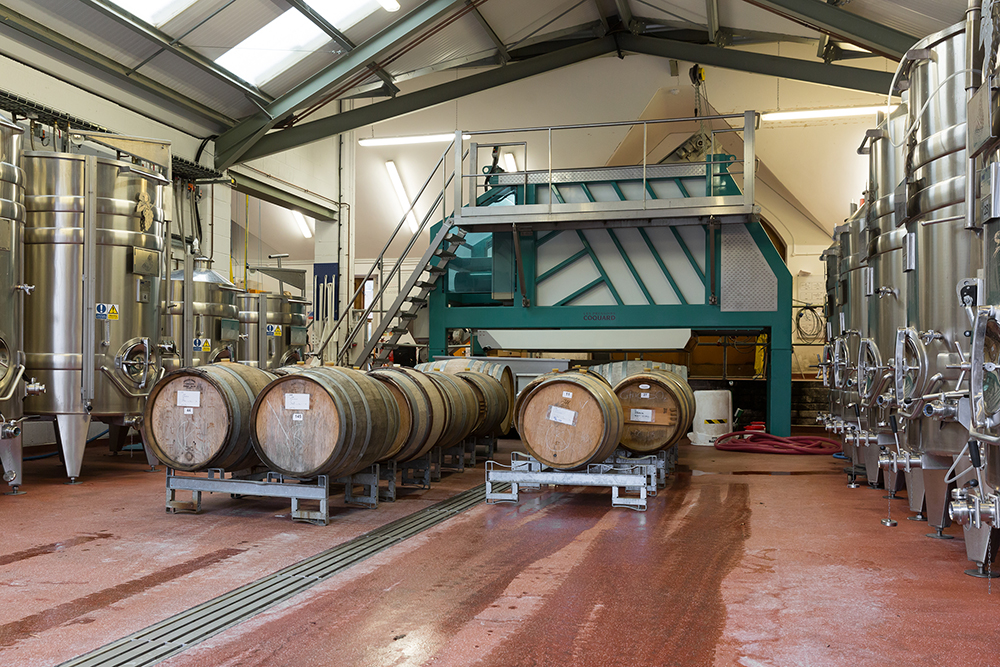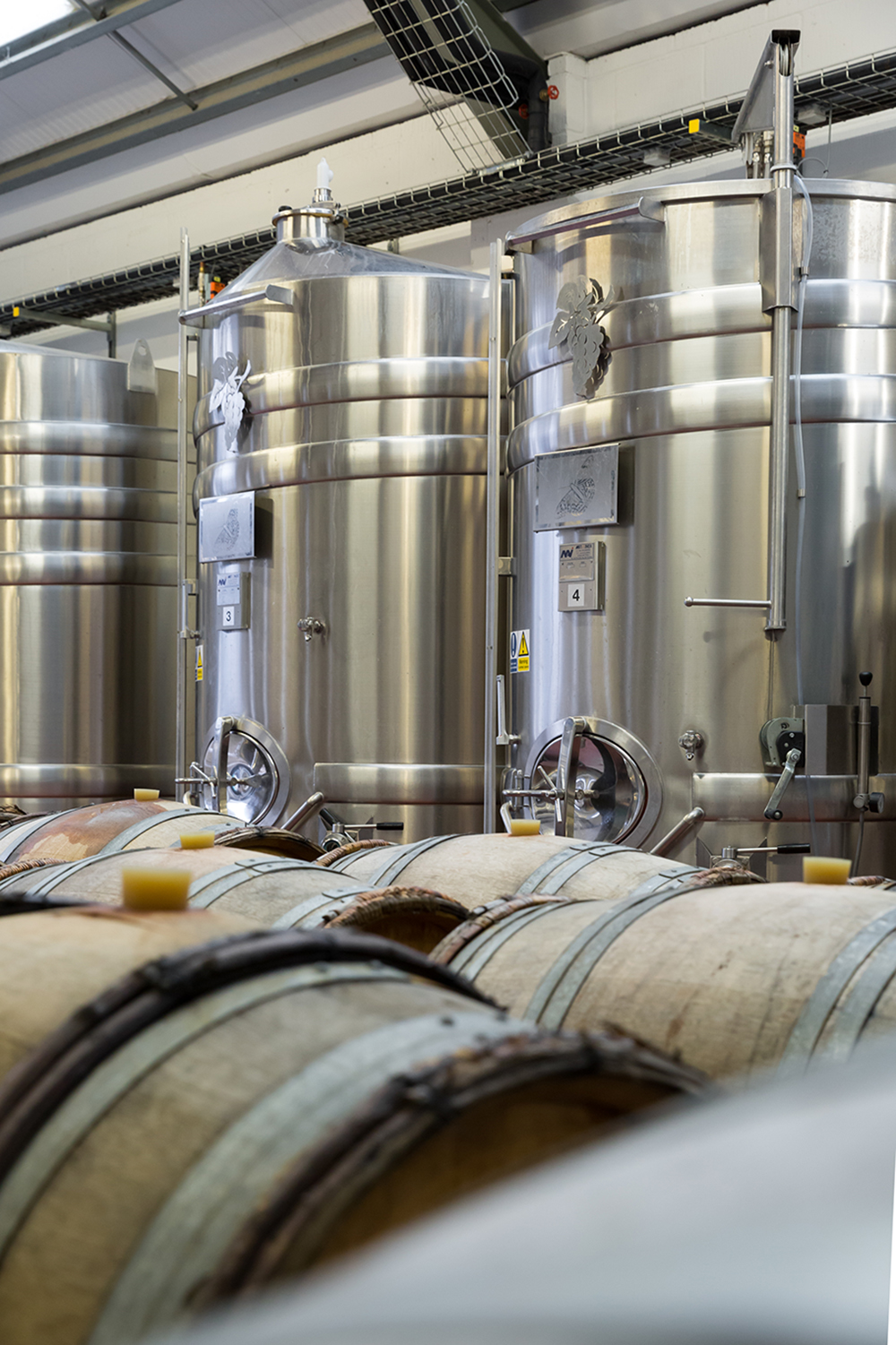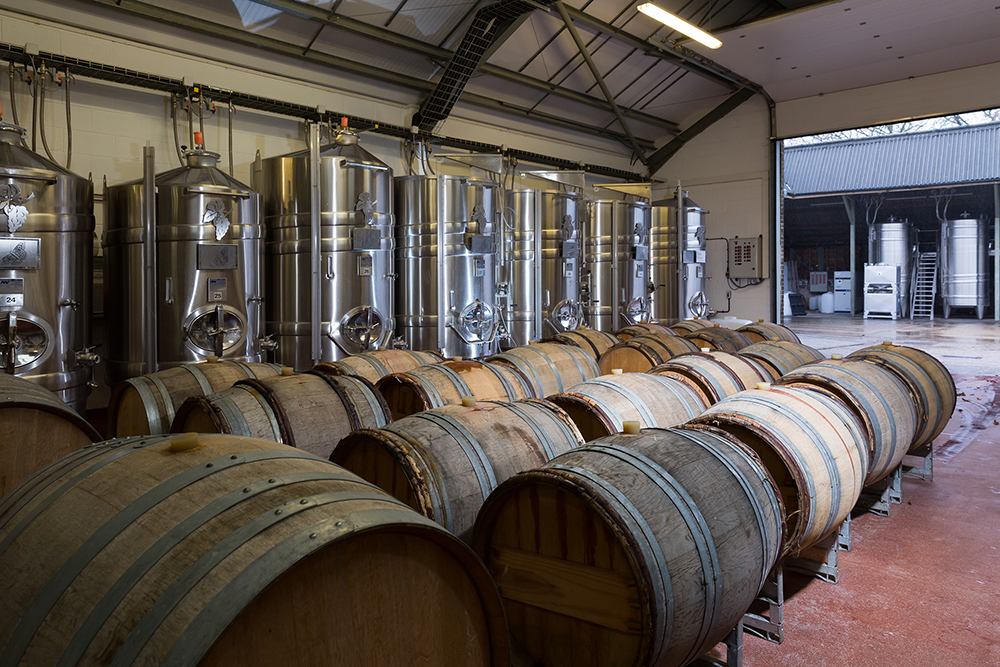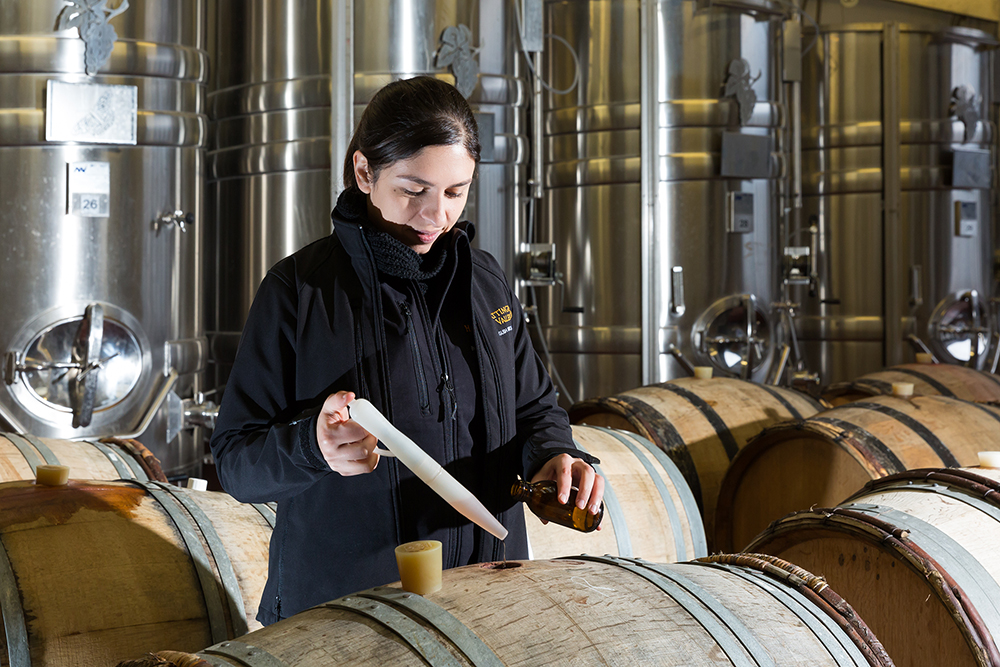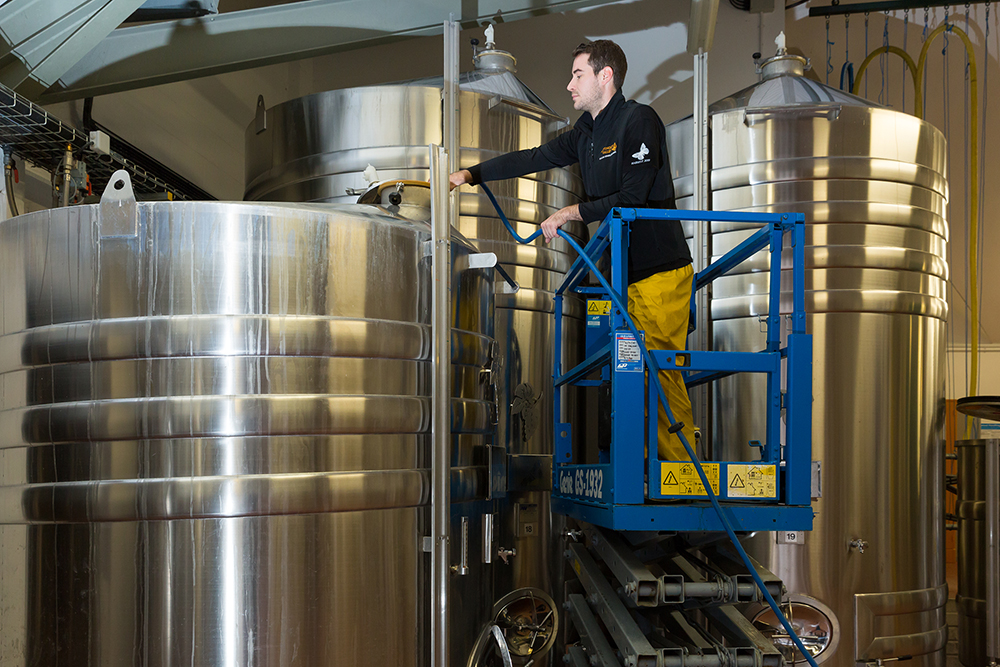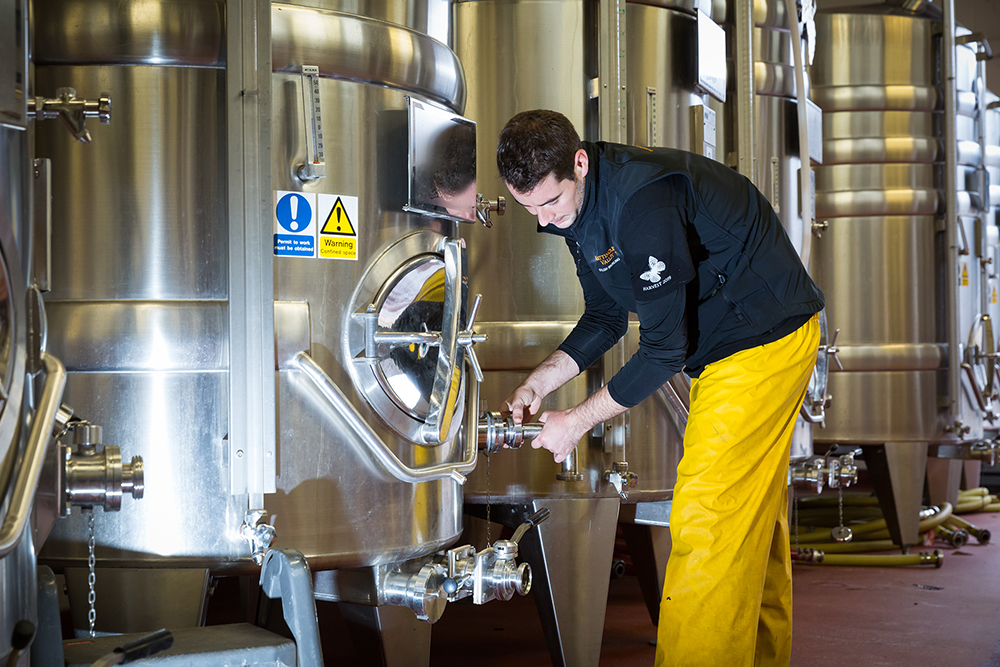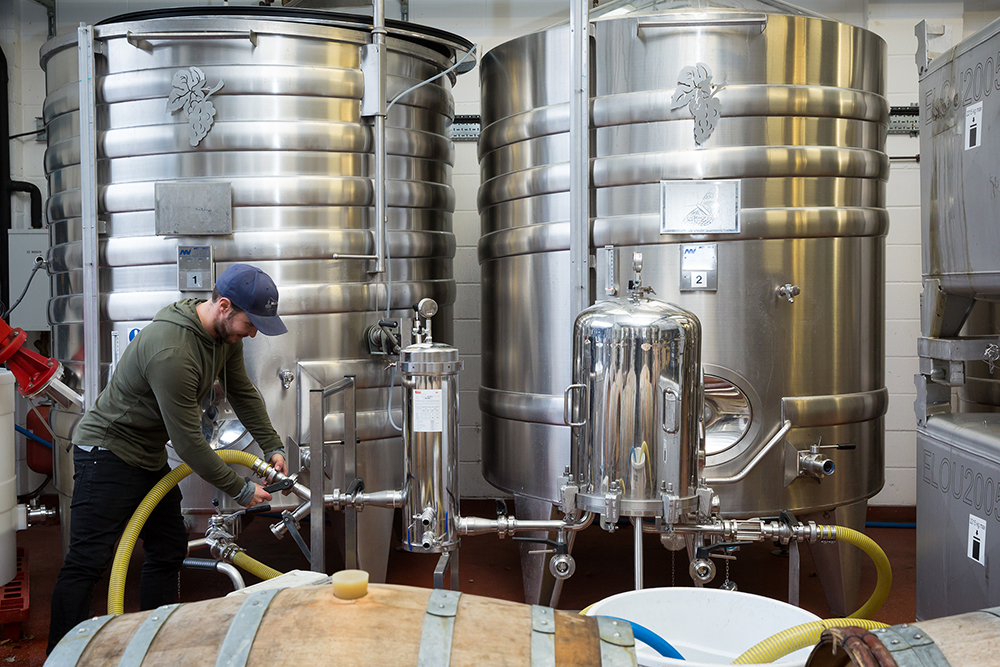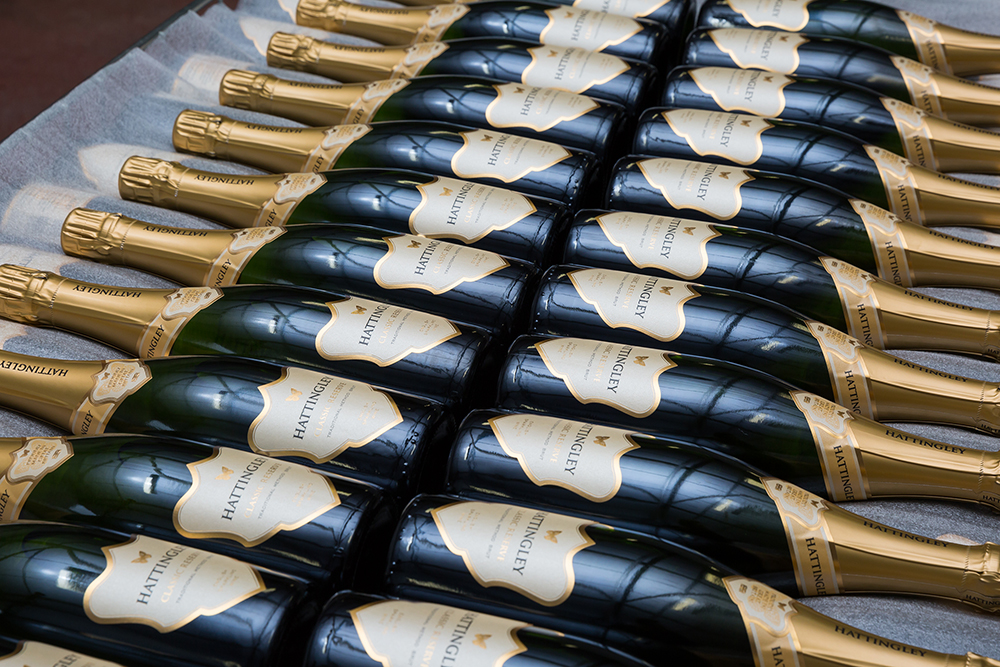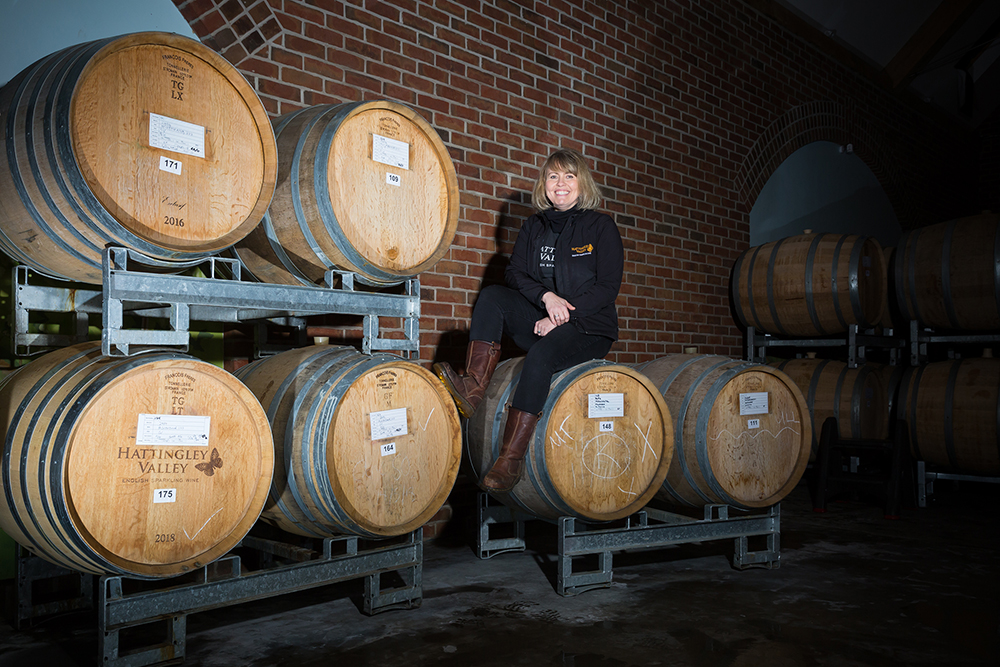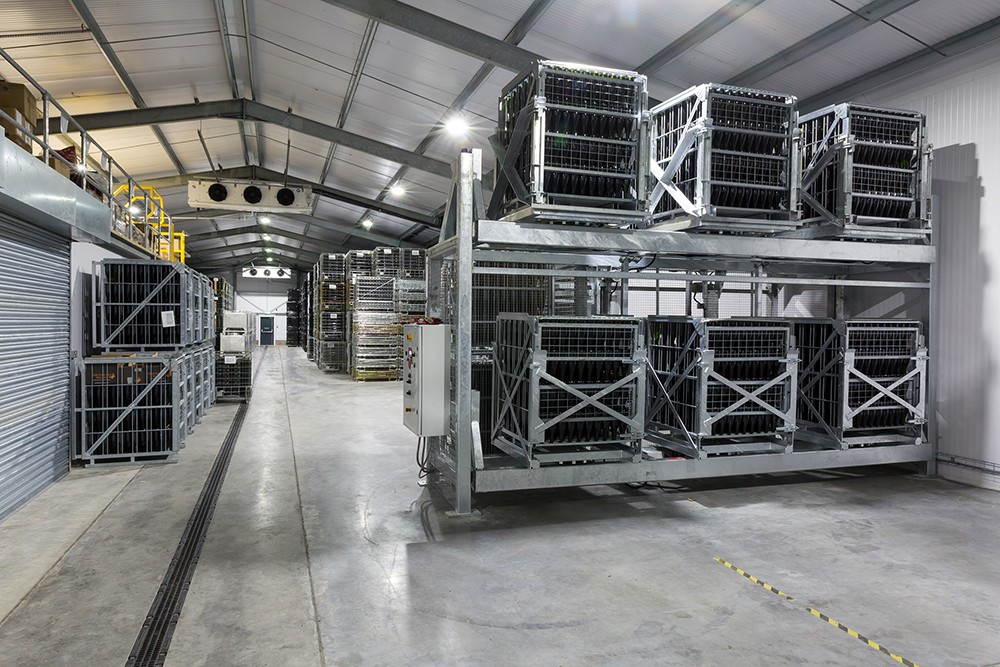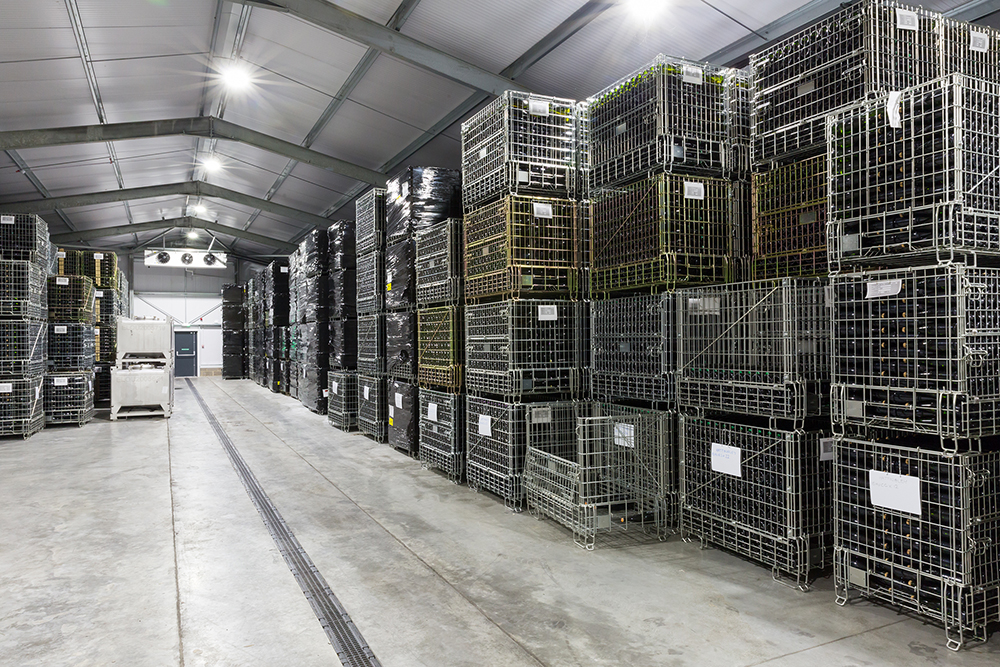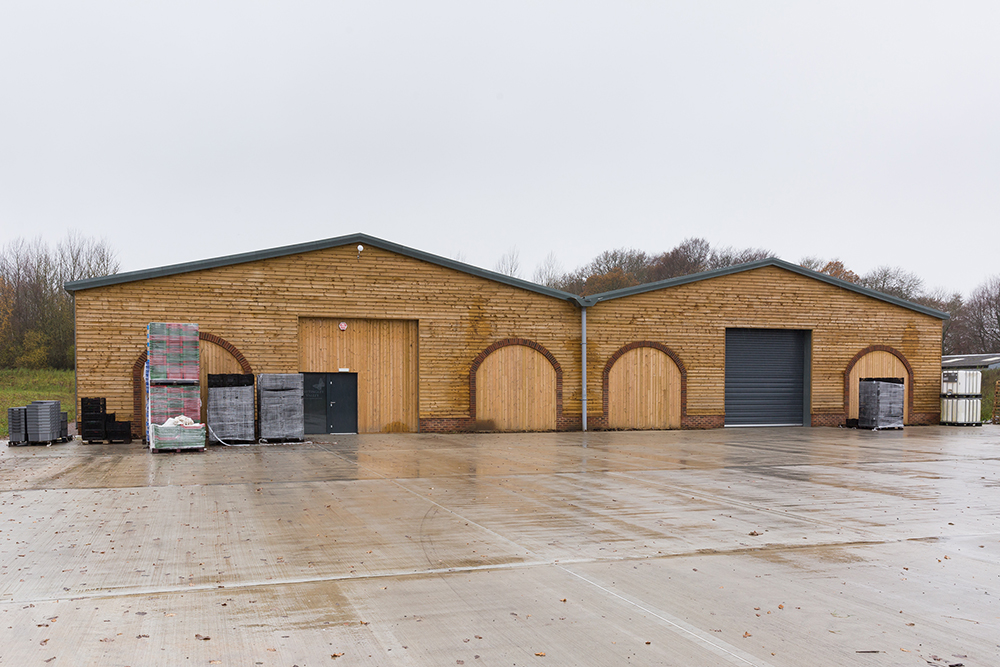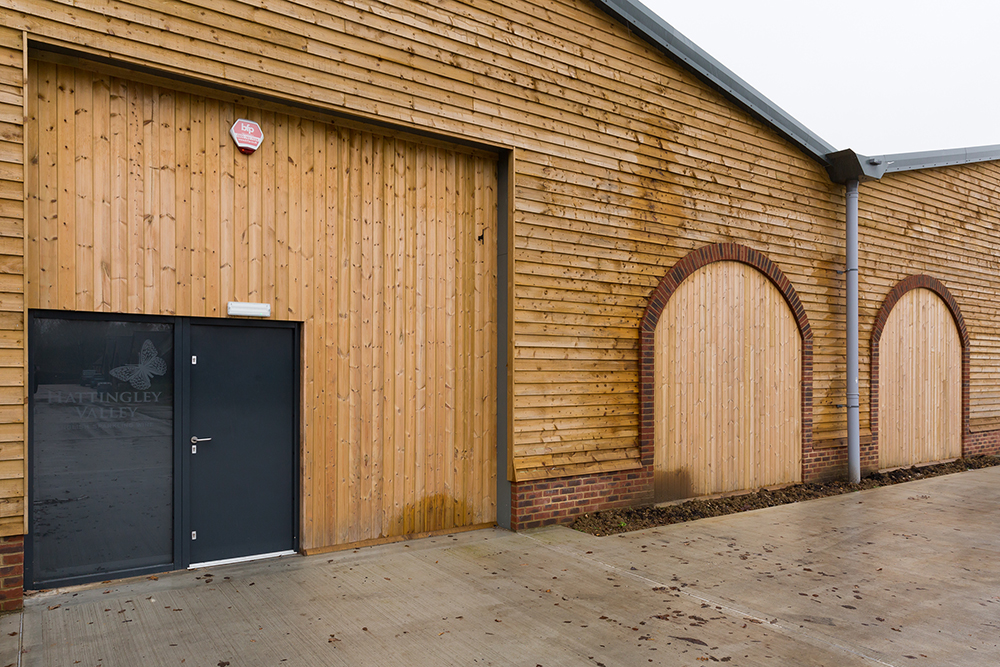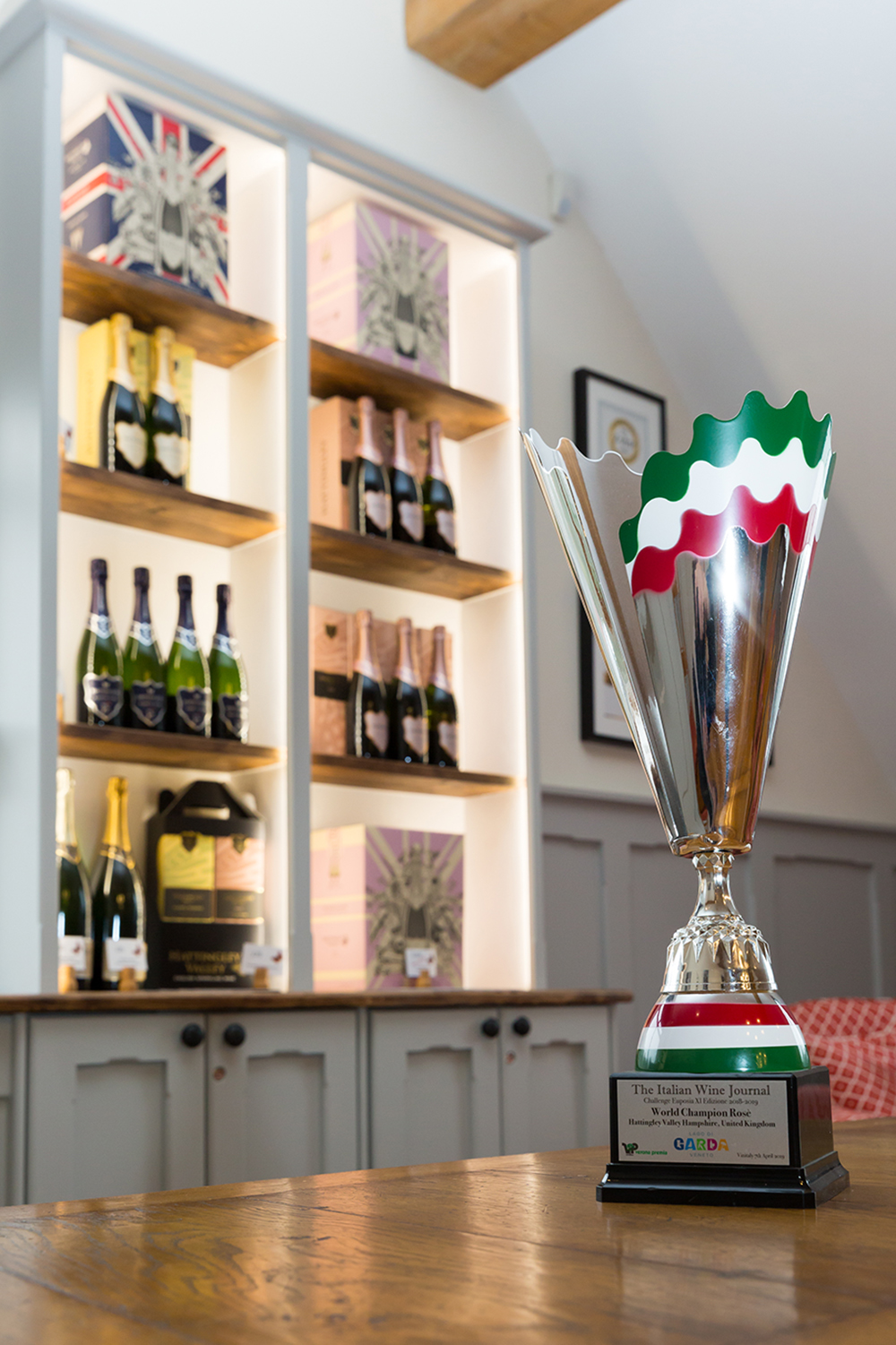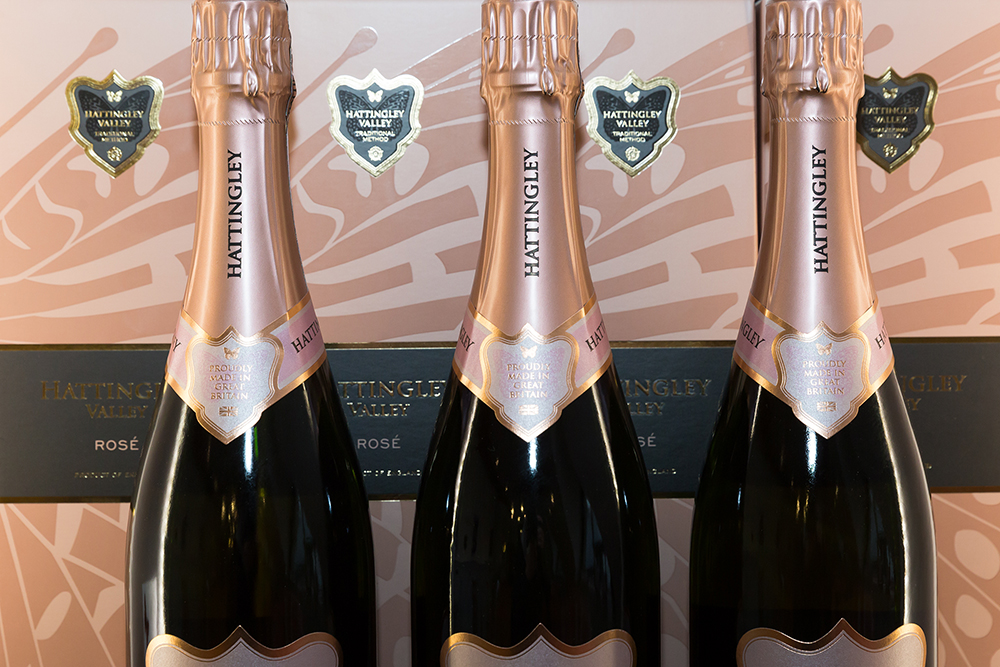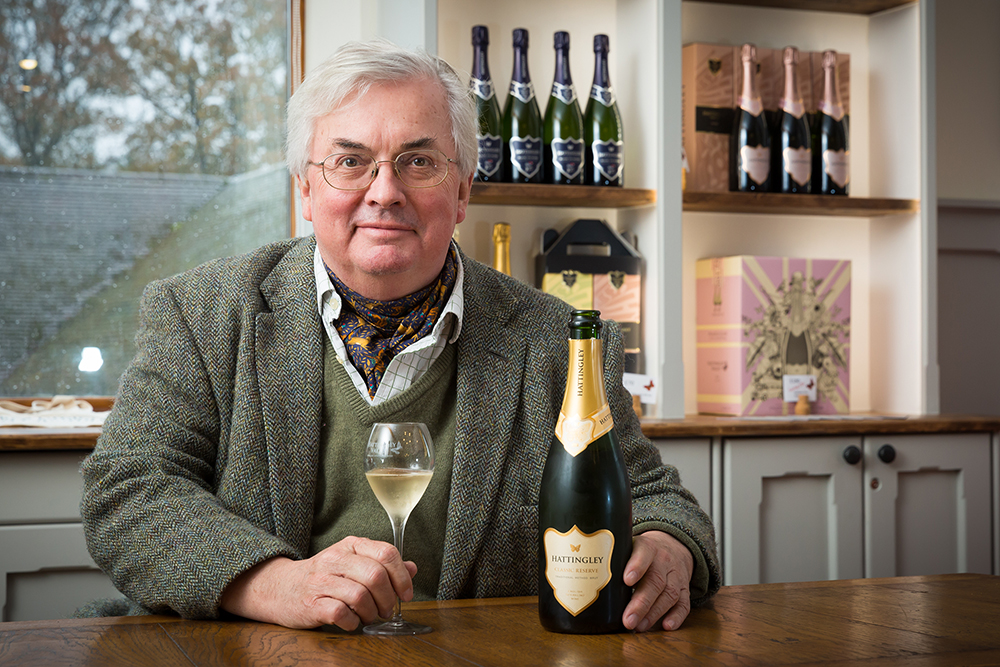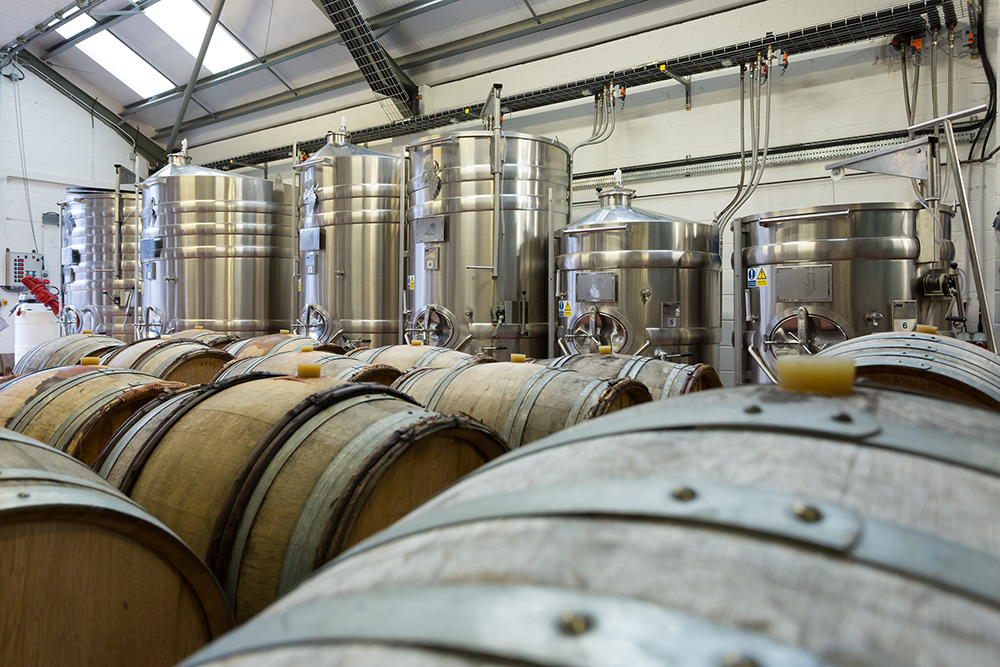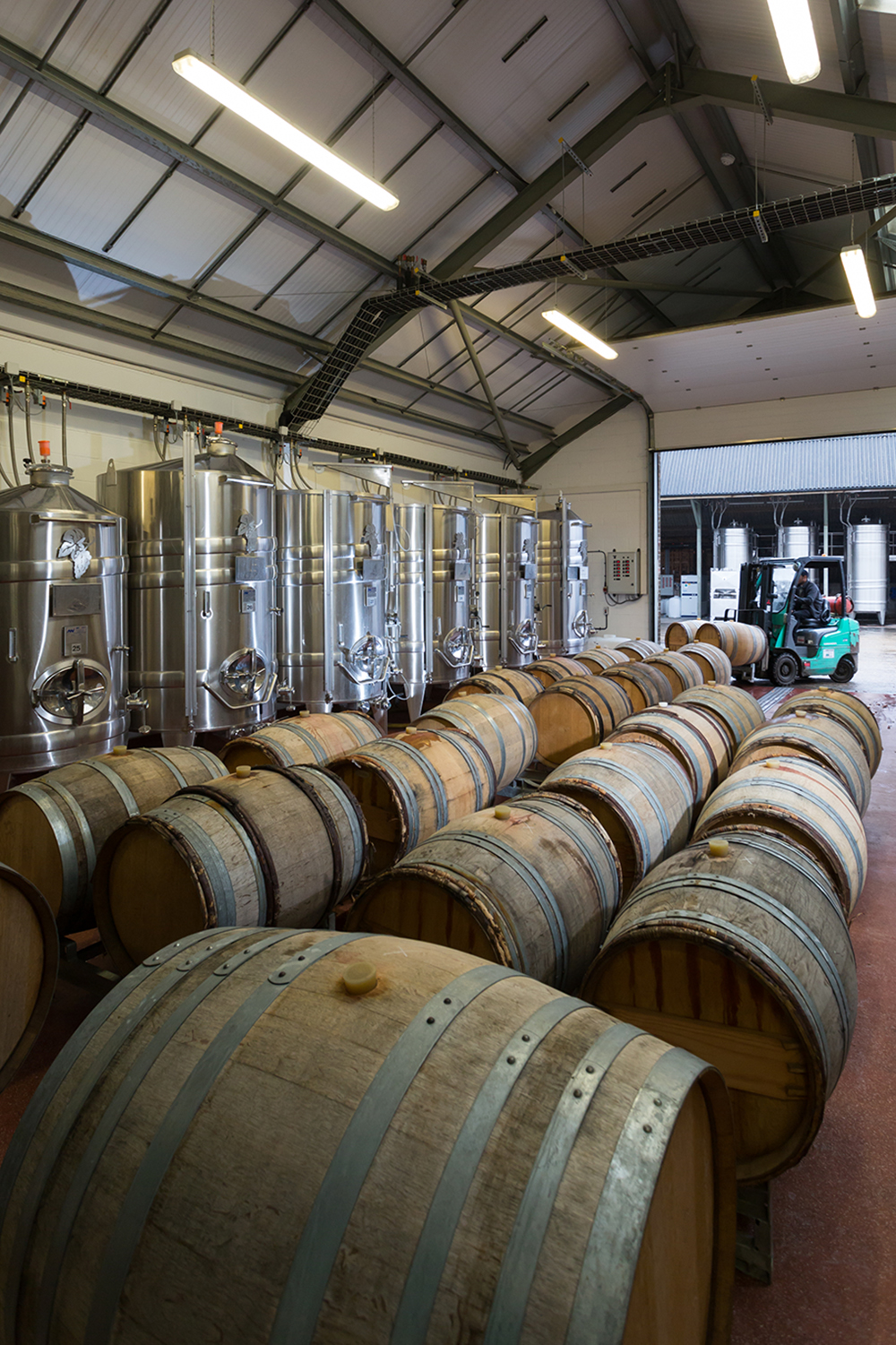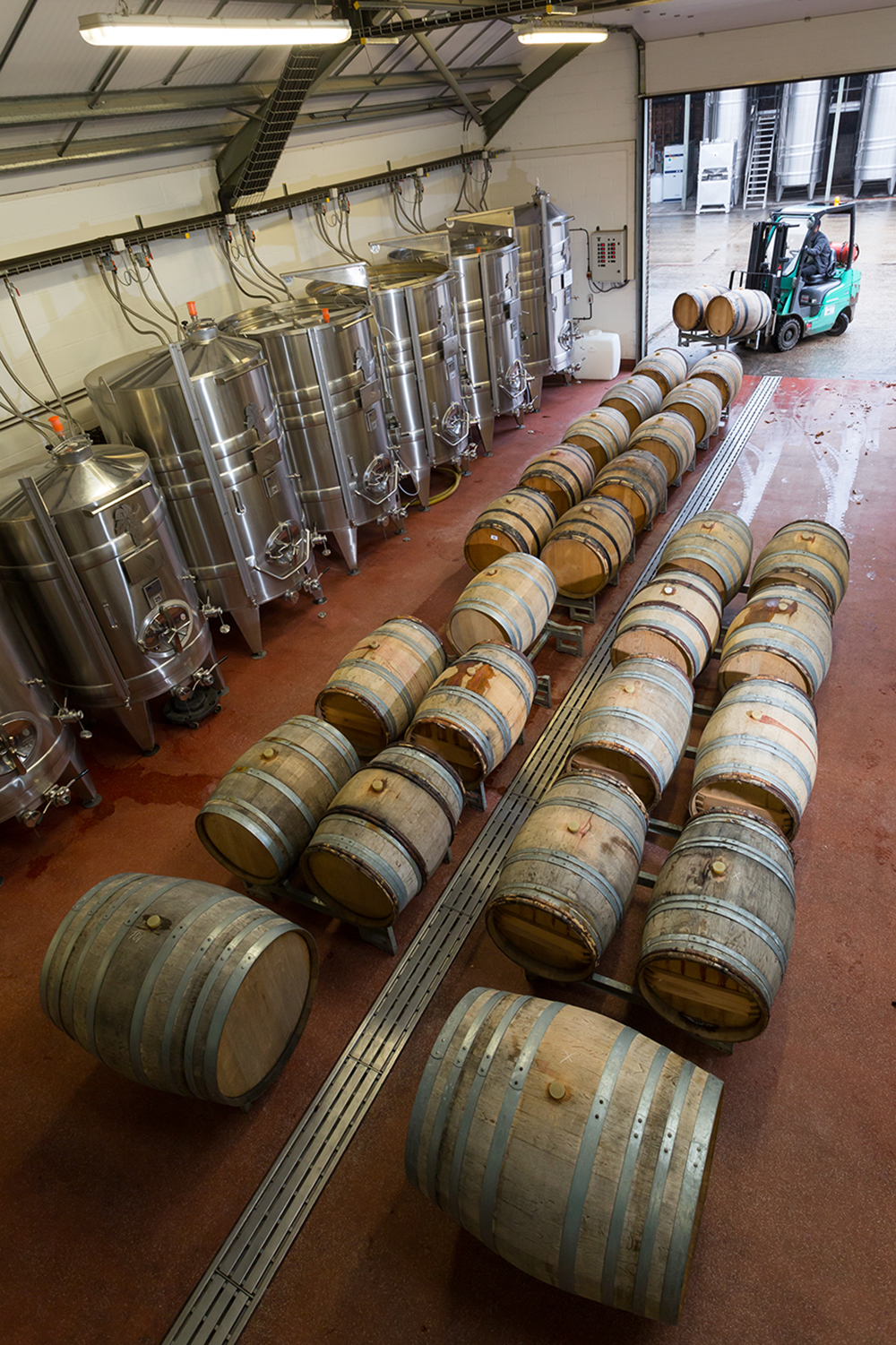A lot can be achieved in a decade.
I seldom advocate new year’s resolutions. I prefer to take an ‘if it ain’t broke, don’t fix it, and if it needs fixing, don’t wait till 1 January’ approach. There is always an assumption too that resolutions need to be broken and so, even if they are approached with the best intentions, more often than not, grand habit-changing plans have usually fallen by the wayside come the first week in February.
Preparing to usher in a new decade however, I decided to take a few moments to muse over three themes the UK wine industry might have written down on its resolutions list. Number one was easy. With a new WineGB scheme set to be launched imminently, sustainability related initiatives will no doubt be the highest-ranking to-do list items for vineyard owners, managers and winemakers alike in 2020.
Number two, the serious expansion of winery facilities in the UK, and number three, looking overseas to establish more export markets, were both inspired by the last edition of Vineyard magazine, which considered the dangerous bottlenecks in the grape to glass process.
With this back-of-a-fag-packet list in mind, I headed off to Hattingley Valley. This Hampshire-based producer will have nothing to put on its new year’s resolution list, as owner Simon Robinson, head winemaker Emma Rice, and marketing and events manager Rebecca Fisher have already successfully tackled these themes head on.
Eco-friendly winery
In 2020, Hattingley Valley, which is situated in Lower Wield, near Alresford, will be entering its own new decade as it celebrates its 10th anniversary. While the English wine producer will be marking 10 years since the winery was opened, the first 22,000 Chardonnay, Pinot noir and Pinot meunier vines were planted on Robinson’s Kings Farm estate in 2008.
It was around this time too that head winemaker Emma, who humbly describes herself as “an unproven risk” Simon took a chance on, entered the picture and was given the small task of designing, commissioning and later running, the estate’s eco-friendly production facility.
One of the first people to graduate from Plumpton College’s Viticulture and Oenology BSc course, Emma had cut her teeth on Californian and Australian vintages before returning to the UK to set up a specialist laboratory service. Working with several big vineyards, completing analysis, selling products such as yeasts and barrels, and providing winemaking consultancy advice, Emma was invited to see if anything could be done with Simon’s collection of old farm buildings.
“Simon was having his trellis work installed by the team at Vine-Works, who I knew from college,” said Emma. “He had asked if they could advise on a winery and so they pointed him in my direction. Simon took me to see the range of old chicken sheds and I remember that, although the space was great, the buildings were decrepit with low ceilings. So, we knocked the whole thing to the ground and started from scratch. It was a huge undertaking.”
As we were chatting, Emma proudly pointed out that the platform we stood on immediately as you walk into the winery, is the only part of the original buildings which remains today.
The UK wine industry might be waiting with bated breath for the introduction of an official scheme, but sustainability is not a new concept. Rebecca was quick to point out that ‘going green’ was very fresh at the time, and it would have been “ignorant for Simon not to have considered sustainability” when constructing his new project.
As wineries are power intensive places, solar has been fitted. Although the site uses an “awful lot more than it generates”, every little helps and to further this, insulation was incorporated in the original cold wine store and riddling room, and the new temperature controlled storage facility has also been fitted with sensor-controlled low-UV lights on timers.
As well as energy, water and drainage were also carefully planned to ensure the winery met its eco-friendly goals. The estate currently has an aerobic digester, called a Bio-Bubble, which effectively ‘eats’ all the winery waste, with the end product being tested and approved by the Environment Agency as drinking water standard.
“I wanted to find a suitable system which would process the winery waste to ensure that we wouldn’t have to pump out each day during harvest,” said Emma. “It is powered by bacteria which needs to be kept in balance. In the early years, we struggled to ‘feed’ the bacteria and then in 2018, when we took in 700-tonnes of fruit, the system was overwhelmed by the volume and a lot of it was diluted and killed off. The Bio-Bubble was only set up to deal with 300-tonnes of fruit, but we are bigger than we ever thought we were going to be and so, despite drainage being very difficult to retrofit or adapt, we are having to look at this.”
Fulfilling an industry need
When constructing a new winery, however, it is not just about being environmentally conscious. Sustainability is also about creating a secure, financially viable business model.
“There is no point being super green if you are going to go bust, because then no one wins,” said Emma. “It is debatable whether growing and making wine in England is a sustainable business full stop. We don’t make millions of pounds; it is a lifestyle choice. We will eventually make money, but it is such a long time for the return because of the initial capital needed and then the ongoing reinvestment costs.”
With this is mind, as soon as work began on Hattingley’s winery, a decision was made to offer contract winemaking services. Today, over 20 different vineyards deliver fruit at harvest time and the team can finish around 60 different wines per year.
“While I cannot believe anyone would plant a vineyard without making sure what they are going to do with the grapes, even back in 2008 it was apparent that there were people with nowhere in mind to make their wine,” said Emma. “I knew that there wouldn’t be enough from Hattingley’s small vineyard to keep me busy winemaking full time, so I said to Simon that contract work would be great for cash flow and would fulfil an industry need. We have never really advertised our services and are now turning potential clients away.”
Dealing with these volumes has justified investment into the very best winemaking equipment. For instance, to keep up with delivery of fruit, at harvest three 4-tonne presses need to be cycled three times each per day. This means that alongside two 4-tonne Defranceschi Magnum bladder presses, and a smaller 1.2-tonne press, Hattingley is home to the ‘Rolls-Royce’ of wine presses: a 4-tonne Coquard PAI.
Every single tank is independently temperature controlled too, so Emma can be cooling one fermentation while warming another for MLF, without having to worry about the glycol and switching lines. While this configuration has doubled the thermal regulation installation costs, it makes sense in a facility of this size.
“Winemaking is all about the layers of quality, so any time you make compromises, you are compromising on the product,” said Rebecca. “Our clients all agree that the quality shines through our bottles. This is not just down to equipment either. Simon has also been wise to invest in the expertise and you need to be able to attract a winemaker, like Emma, who is a professional and knows what they are doing.”
Sourcing more grapes
In traditional method English sparkling winemaking, which is what Hattingley primarily but not exclusively focus on, there is an incredibly long lag time between the harvest and sale date. Therefore, establishing the contract winemaking service has also allowed the Hampshire-based site to grow much faster than it otherwise would have been able to.
“Some producers choose to have a very large vineyards and sell fruit in the formative years to fund the winery over time,” said Emma. “We did the opposite. We had a small vineyard and funded the winery through contract work. We then grew our business by using our connections and this model to source more grapes.”
Instead of increasing its acreage of vines, Simon has been able to invest in expanding the winery. These facilities, together with Emma’s reputation, have successfully attracted many high-profile growers who, as well as having their wine made here, are often happy to sell a portion of their high-quality fruit, which is in turn used to fuel the growth of the Hattingley brand.
“The reason this works so well is that we keep all the wines separate right up until the final stages,” said Emma. “Vineyards are incentivised to grow the very best fruit they can because it is going into their wine, as well as ours. By taking a split of each press load, we can ensure that no one is able to cherry pick certain parcels of fruit, but at the same time we can still protect the integrity of the individual vineyard and their label.”
Emma explains that “you wouldn’t survive long as a contract winemaker if you only took the best for your own wines” and so the contract clients’ wines are always bottled first and Hattingley is then produced with the remaining amount. However, there is no doubt that this approach gives Hattingley an enviable access to some of the finest fruit grown across multiple sites.
“I have said it before, I wouldn’t want to make wine from a single estate, it would be boring and I would have nothing to play with,” said Emma. “This year for instance, we are going to be able to make a still rosé from some super ripe Pinot noir précoce which came from a vineyard in Kent. If we just had our vineyards we wouldn’t have had that option. We would have needed to plant, wait for the vines to reach maturity and even then we may not want to do a still rosé every year.”
Storage is the real issue
Despite having expanded the winery many times over the years to keep up with demand, the facilities are now up to a maximum capacity of 700-tonnes (Emma comments that 500-tonnes would be more comfortable) and with big vintages in both 2018 and 2019, they are quickly running out of space.
“There is enormous vintage variation in the UK which makes things tricky, but unless there is a better balance of wineries and vineyards, some will have to grub up,” said Emma. “I also think that there is still a dangerous number of people planting without thinking about what is going to happen to their fruit. The winery capacity is not there and vineyards cannot assume that there will be space for them.”
Even if there was a sudden halt on new plantings, the biggest challenge the industry is going to face over 2020 and beyond is actually the ability to store made wines, particularly during the lees aging process, keeping up sales momentum and maintaining a premium price tag.
“I can limit contracts and can control the intake of grapes, but where are we going to put all of the bottles of wine?” said Emma. “Storage is a real issue and will create a huge headache down the line. We need to be able to keep and store these bottles for five years. I also cannot dictate when our contract clients will take their wines. If sales don’t keep up, I could play hard ball and tell people to move wine, but then people may panic, prices could plummet and the industry would be doomed.”
The huge volumes of 2018 wines, combined with the number of intensive, big vineyards currently waiting to come online, could see the industry very much “at the mercy” of other producers’ decisions.
“There is no control over how much is planted, how much is produced, or what price is charged,” said Emma. “We don’t want to become like Champagne where everything is so regulated it’s impossible to move, but equally we can’t do anything about new people coming into the market and potentially flooding it with cheap wine. At Hattingley Valley, we have a reputation for producing very high quality wine at a relatively high price and we want to maintain that price because we know how much it costs to make wine.”
Like “a gateway drug to better quality produce”, it is possible that cheaper English non-traditional method sparkling wines could potentially attract the interest of people who would never have previously imagined spending £30 on a bottle of wine, helping to draw them into the category. However, putting brands in a position where they are recognised globally, is, in the long term a better solution to help maintain viable margins and provide outlets for the huge volumes of wine which are going to be made, particularly from the 2018 and 2019 vintages.
Looking overseas
A lot has changed at Hattingley Valley in the last 10 years. From processing 30-tonnes of fruit in 2010, over the space of two weeks, the team now handle around 30- to 40-tonnes per day during harvest. Despite only having started selling wine six years ago, the other major change for the estate has been the establishment of the brand and growth in overseas markets.
“Simon has always said he would like to be 75% export,” said Rebecca. “We currently export around 40% but then we are still very young and if a new country comes on board, or there is a new large contract signed in the USA, it changes very quickly. Gareth Maxwell our sales and export manager has the personality to drive sales and people, especially in places loyal to brand Britain like the USA, love to see Gareth turning up in his tweed suit.”
To export successfully, there is no doubt that producers have to be committed, but Simon believes that these markets should not just be limited to large producers with the ability to spend tens of thousands on attending international shows, entering relevant regional awards, and flying out to host tasting events and meetings.
“Export is critically important for the development of the industry,” said Simon, who is also the current chairman of the industry’s membership organisation Wines of Great Britain. “We are one of the, if not the, largest exporter and have exported to 16 countries. I have always seen it as a critically important part of our strategy but we don’t have a dedicated person looking after export. Visiting the country to begin with is not necessary, and all producers should be able to find a good distributor.”
Some countries do have quirky domestic markets, and although Simon would like to expand Hattingley’s reach into Europe, France, Italy and Spain have complex structures. The team is however, successfully making inroads into Germany and Simon does admit that, if they can “crack the UK, USA and Japan” that would be “satisfactory”.
Export is certainly one way to deal with ‘oversupply’ but the domestic market will always be the most important and producers should never lose sight of that. The UK is the one of the biggest wine markets in the world and sights should be set on taking a bigger share of this.
“We are still very small by world standards,” said Simon. “The 12 to 15million bottles produced in the 2018 harvest is tiny compared to Champagne which made 300 million. When you consider that 40 million bottles of Champagne are consumed in the UK each year the numbers really do rattle around. There is still a way to go, but if you look overseas there is a huge potential for the expansion of sales. Exports do make people nervous, but there is plenty of support on offer.”
As chair of WineGB, Simon also highlighted that there is a lot of work being done, in partnership with government, to further promote English and Welsh wines overseas. The membership organisation will also be unveiling its generic brand strategy at its business and marketing conference due to be held on 30 January.
“A lot of the benefits of our efforts will be accrued by vineyards and producers over the next year regardless of whether they are members, or not,” said Simon. “Some take the view because of this that they don’t need to be a member, but if everyone followed this the association would collapse. Supporting the industry’s central body is just the right thing to do. There is a lot more going on than simple lobbying and I would urge all vineyards to join the organisation.”
As Hattingley Valley prepares to celebrate its 10-year anniversary, happy with the model and quality brand which has ensued, Simon is looking forward to “more of the same”. A special celebration will be held to commemorate the decade on Saturday 30 May at the winery.

